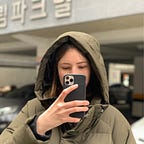02 | Micro UX: A closer look
Group members: Damul Yang, Moxue Jia, Giada Han and Maria Shuttleworth
<<< For my previous project on Micro UX, click here.
Following last weeks presentation the group discussed potential directions for the project. Since this is a ‘Micro’ unit, we were very interested in seeing how plants function at a micro-level. We considered bio-art (defined as a bridge between art and science (Artdex, n.d.)), however collectively decided we were more interested in transforming real data we gather from plants into digital art; exploring how a plant communicates by meeting them in their world (the micro) and exploring possible directions for inter-species communication/expression.
During our first visit to CPG we noted what technology the gardeners use to measure the health of their plants. What struck me was their limitations — these measurements only show part of the story. Inspired by a book I had just started to read, I thought about how our project could “unflatten” what we see: “unflattening is a simultaneous engagement of multiple vantage points from which to engender new ways of seeing” (Sousanis, 2015). A personal aim for the rest of the project would be to see how we could enable looking at plants through a new lens, highlighting the complexity we cannot see with the naked eye.
Looking in.
We begun by purchasing a 1000x microscope, and decided to use this to capture a single plant in several different states: boiled, microwaved, frozen, burnt and alive.
We did this to find and compare cell patterns under specific and extreme conditions. We found that there were observable differences, creating interesting patterns.
Meanwhile, I experimented with macro photography — using a macro lens adapter for my DSLR.
I was curious to see if the differences observed with the microscope would be as clear in macro photography. I found that although there were differences they were only visible at surface-level so I stopped after comparing frozen to boiled.
Presentation feedback.
We had a few questions about what it is that we are communicating — we had mentioned expanding upon the way we see plants and creating a new visual plant language, but our classmates were concerned that there may be too large of a jump between observing patterns and a new way of communicating.
Another point of criticism was that we were simulating states, not gathering real data (e.g. burning instead of finding a dried-up leaf). These are both points that we wanted to return to in the following week, where we aimed to apply technology to our findings and start making an experience around our research.
For my next project on Micro UX, click here. >>>
References.
- Artdex, n.d. What is Bio Art?. [online] ARTDEX. Available at: <https://www.artdex.com/what-is-bio-art/> [Accessed 3 May 2021].
- Catapano, F., 2021. Colorem. [online] Behance.net. Available at: <https://www.behance.net/gallery/115663781/Colorem?tracking_source=search_projects_recommended%7Corganic%20generative%20art> [Accessed 3 May 2021].
- Čerić, P., 2013. Noise[Noise[Noise[ … ]]]. [online] Behance.net. Available at: <https://www.behance.net/gallery/12813733/NoiseNoiseNoise-?tracking_source=project_owner_other_projects> [Accessed 3 May 2021].
- Kapoor, S., 2020. Sacred Geometry — Personal Project. [online] Behance.net. Available at: <https://www.behance.net/gallery/110083959/Sacred-Geometry-Personal-Project?tracking_source=search_projects_recommended%7Corganic%20generative%20art> [Accessed 3 May 2021].
- Krämer, R., 2021. CAPTURED — The Series. [online] Behance.net. Available at: <https://www.behance.net/gallery/113729909/CAPTURED-The-Series?tracking_source=search_projects_recommended%7Corganic%20generative%20art> [Accessed 30 May 2021].
- Sousanis, N., 2015. Unflattening. Cambridge, Massachusetts: Harvard University Press, p.32.
- Villaluz, A., 2021. Reaction Diffusion. [online] Behance.net. Available at: <https://www.behance.net/gallery/116945697/Reaction-Diffusion?tracking_source=search_projects_recommended%7Cgenerative%20art> [Accessed 3 May 2021].
